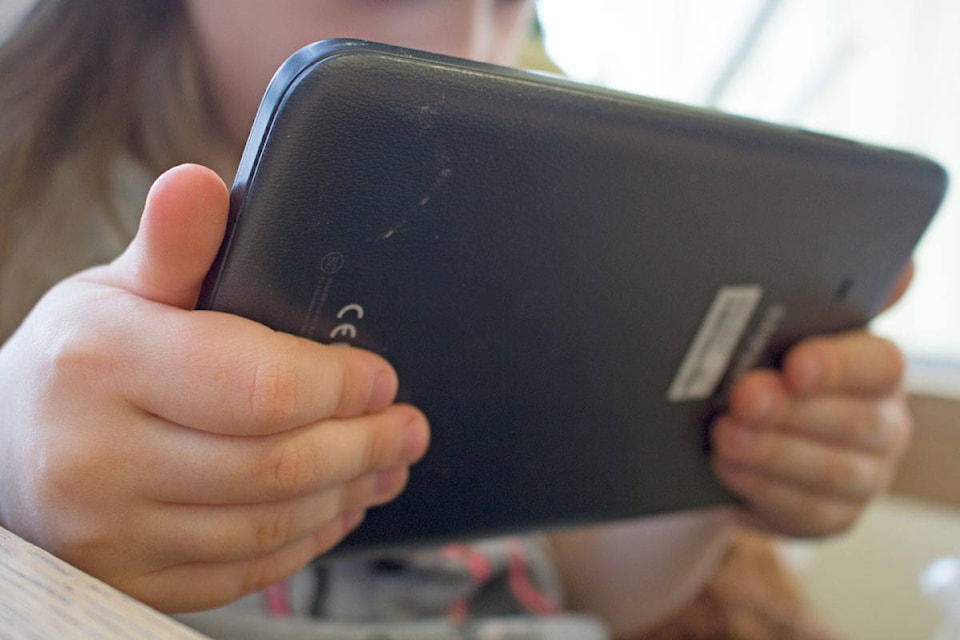Sometimes while Megan Young is cooking, she’ll narrate what she’s doing in detail, “I say, ‘I’m chopping vegetables’ or ‘This is a carrot.’”
She’s not talking to herself or teaching a cooking class, the new mom is interacting with her one-year-old. While her child is too young to be much help in the kitchen, Young, a speech-language pathologist, said in-person conversations is a great way to develop young minds.
“Connecting with your child is one of the best ways you can support their development,” she said. “In a child’s brain, one of the key factors is access to oral language.”
A parent herself, and since even before then, Young is the Northern representative on the Speech and Hearing BC board. She said it’s not always easy to be engaging with children — and technology doesn’t help.
“It can be daunting or challenging to think of engaging with your kid all of the time, especially if it’s the norm for you to have a lot of screen time in your life because, let’s face it, it does become a habit,” she said.
READ MORE: Put down the phone, please, say children, experts
To help parents and caregivers find time to communicate with young kids, Speech and Hearing BC launched their Talk Spot campaign for the month of May. The volunteer organization, run by speech therapists and audiologists, is encouraging making the time to talk in real space, in real time with real people. Part of the campaign encourages putting down those screens.
“We know that screen time isn’t good for kids. Infants and toddlers have a really hard time transferring 2D information to a representation of 3D objects. That means, basically, they’re very unlikely to learn from TV or devices when they’re really young,” Young said. “It’s hard to transfer or generalize what they see on screen to what it means for their life. But we do know, by contrast, that they learn really intensely through face-to-face interactions.”
While some technology is marketed directly to children, it doesn’t always help them. Children under five years old should be looking at screens for less than an hour a day. Above five years old, no more than three hours a day is recommended. Even having TV playing in the background can be distracting, and has a negative impact on the quality of connecting to each other.
Young said people are fascinated by the idea of educational apps, but less screen time is better.
“Apps are not a substitute for having time to engage face-to-face,” she said. “They’ve even suggested reading isn’t even as good as face-to-face interactions.”
For her own clients, Young has three suggestions. First, respond when your child tries to communicate, even if they can’t speak yet. Since young kids learn by imitating, responding teaches how people take turns listening and talking.
Next, Young said to “Take every opportunity to speak with — not only to — your children.” This is where those cooking lessons come in. She’s not only engaging but using her child’s surroundings to teach them about what they’re looking at and doing in the day to day.
Getting creative is Young’s last recommendation. The goal is to try to make conversations ongoing, and the key is to ask open-ended questions.
It takes practice, Young said, which is why Talk Spot is a good reminder to put in the effort.
“As May goes on, we can think about how to be more intentional with our devices and how much time we spend on them versus how much time we spend talking to each other.”
WATCH MORE: Tiny therapeutic horse makes for touching story
keili.bartlett@thenorthernview.com
Like us on Facebook and follow us on Twitter
